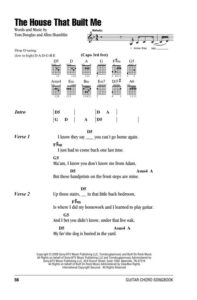Explore the architectural features, design trends, materials, and functionality of 1960s homes, and discover their lasting impact on modern design.The 1960s marked a dynamic era in residential architecture, characterized by distinctive styles and innovative design principles that continue to influence modern homes. As post-war prosperity ushered in a wave of suburban expansion, houses built in this decade showcased an exciting blend of aesthetic appeal and practicality. From bold architectural features to the emerging design trends of the time, these homes captured the spirit of a generation seeking comfort and individuality. This blog post explores the defining characteristics of 1960s houses, including the materials used in their construction and the interior layouts that prioritized functionality. We will also examine how the home design of this iconic decade has left a lasting impact on contemporary architecture, proving that the charm and creativity of the 1960s remain relevant in today’s housing landscape. Join us as we delve into the fascinating world of houses built in the 60s!
Architectural Features of 1960s Homes
The 1960s marked a significant era in architectural design, giving birth to a variety of styles that reflected the culture and societal changes of the time. One of the most distinctive features of 1960s homes is the emphasis on open floor plans, which encouraged a more casual lifestyle and social interaction among family members. This shift towards spaciousness was a reaction against the more compartmentalized homes of previous decades, allowing for fluid movement between spaces.
Another notable architectural feature of 1960s houses is the use of large windows and sliding glass doors, which integrated indoor and outdoor living. These expansive glass elements brought natural light into the home and connected occupants to their surroundings. The use of natural materials such as wood and stone was also popular, contributing to the overall organic aesthetic of the time.
This decade also saw the rise of various stylistic influences, including Mid-Century Modern, Split-Level, and Ranch-style homes. Each of these styles had unique characteristics but shared common elements like low-pitched roofs and horizontal lines, which emphasized the relationship between the house and the landscape. The 1960s truly set the stage for modern architectural tren
Design Trends in 1960s House Construction
The 1960s were a time of dynamic change and innovation in architecture and design, influenced by various social and cultural movements. This period saw a shift away from more traditional building styles, embracing new materials, forms, and approaches that reflected the spirit of the era.
Key design trends in 1960s house construction included:
- Open Floor Plans: Homeowners began to favor open layouts that encouraged social interaction and flexibility within spaces.
- Abundant Natural Light: Large windows and sliding glass doors became popular, allowing for the influx of natural light and a connection to the outdoors.
- Integration with Nature: Homes were often designed to blend in with their surroundings, utilizing natural landscapes and minimizing the impact on the environment.
- Use of Geometric Shapes: The use of bold geometric shapes and asymmetrical designs marked a departure from previous architectural styles, making homes look cutting-edge and modern.
- Multi-Level Structures: Split-level homes gained popularity, offering unique layouts that differentiated living spaces and created visual interest.
Additionally, the influence of Mid-Century Modern design was prominent during this period, characterized by clean lines, organic forms, and minimal ornamentation. This style aimed to create a harmonious balance between functionality and aesthetics, which continues to influence modern architecture.
Overall, the design trends of the 1960s shaped the way homes were conceived and constructed, leading t
Materials Used for 1960s Home Building
The 1960s marked a significant shift in building methodologies and materials used in home construction. During this transformative period, numerous advancements were made in the types of materials utilized, which impacted both aesthetics and functionality.
Homes built in this era often featured materials that were not only innovative but also sustainable and cost-effective. Some of the most commonly used materials included:
- Brick: A staple in many neighborhoods, brick offered durability and low maintenance. It provided homes with a timeless look while ensuring structural stability.
- Wood: Timber was extensively used for framing, flooring, and paneling. The natural warmth of wood contributed to the overall aesthetic appeal of many homes.
- Concrete: Especially popular in mid-century modern homes, concrete was valued for its strength and versatility. It enabled architects to create larger open spaces.
- Vinyl: As a more affordable option, vinyl siding became a popular choice for exterior finishes. It was easy to install, offered low maintenance, and came in various colors.
- Fiberglass: Used in insulation and windows, fiberglass contributed to better energy efficiency, which was becoming an essential factor for homeowners.
As a testament to the era’s evolving construction techniques, these materials significantly influenced how homes were built, affecting indoor comfort and energy savings. The combination of durability, cost-effectiveness, and aesthetic quality helped define the architectural landscape of the 1960s.
Many of these materials have had a lasting impact and continue to influence modern home construction. Understanding the choices made during the 1960s assists us in appreciating the evolution of home design and materials today.
Interior Layout and Functionality in 1960s Houses
The 1960s represented a significant era in American architecture, with homes designed to reflect both the functional needs of families and the evolving aesthetic preferences of the time. The interior layout of houses built during this decade was heavily influenced by the burgeoning desire for open floor plans and multi-purpose spaces.
One of the key features of 1960s houses was the integration of living spaces. Unlike the more compartmentalized designs of earlier decades, homes often boasted large, open areas that combined the living room, dining room, and kitchen. This trend fostered social interactions and allowed families to engage with each other more freely. Below is a summary of the common layout styles:
| Layout Style | Description |
|---|---|
| Open Concept | Integrates multiple living areas into a single larger space, enhancing interaction. |
| Split-Level | Features staggered floor levels, creating distinct areas while maintaining openness. |
| Ranch Style | Single-story homes with long, low profiles and an emphasis on horizontal lines. |
Another notable aspect was the emphasis on functional furniture. Homes often featured built-in shelves and storage, which maximized space and minimized clutter. The 1960s design ethos valued practicality, ensuring each room had a specific purpose. For instance, many homes included spacious family roo
Impact of 1960s Home Construction on Modern Design
The 1960s were a pivotal decade in the world of architecture and home design, leaving an indelible mark that continues to influence modern construction. The simplicity and functionality of designs from this era have been reinterpreted in contemporary aesthetics, emphasizing a balanced relationship between form and function.
One of the most notable impacts of 1960s home construction is the incorporation of open floor plans. During this time, homes began to prioritize spaciousness and fluid movement within living spaces. This trend can be seen in today’s architectural designs, where barriers between the kitchen, living, and dining areas are minimized to encourage a communal atmosphere.
Additionally, the use of large windows and natural materials in the construction of 1960s homes has inspired current architects to emphasize sustainability and energy efficiency. The desire to create a connection between indoor and outdoor spaces is a value that resonates strongly in recent architectural practices. Elements such as natural light and eco-friendly materials are now essential component
Frequently Asked Questions
What architectural styles were popular for houses built in the 60s?
The 1960s saw a rise in mid-century modern and ranch-style homes, characterized by open floor plans and minimal ornamentation.
What materials were commonly used in 1960s homes?
Common materials included brick, wood siding, and large glass windows that emphasized natural light and a connection to the outdoors.
Were there any notable technological advancements in homes built in the 60s?
Yes, the 1960s introduced innovations such as central heating and air conditioning, as well as advancements in insulation and energy-efficient designs.
How did the cultural changes of the 60s influence home design?
The cultural revolution of the 1960s brought a desire for individuality, leading to homes being designed with unique features, open spaces, and a blend of indoor and outdoor living.
What are some common features of 60s houses?
Common features include all-electric kitchens, sliding glass doors, large patios, and carports instead of traditional garages.
Are 1960s homes considered valuable in today’s real estate market?
Yes, many 1960s homes are considered valuable, especially if they maintain original features or have been updated with modern amenities while preserving their unique character.
How can homeowners maintain or restore a house built in the 60s?
Homeowners can maintain or restore a 60s home by preserving original materials, updating systems like plumbing and electrical, and being mindful to blend modern updates with the home’s original style.





